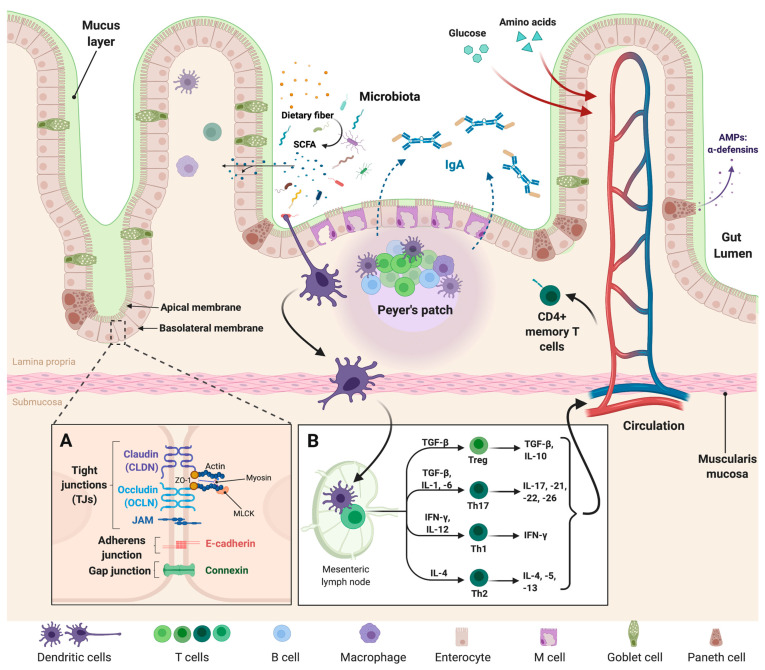Figure 1.
Intestinal epithelial barrier organization. The intestinal epithelium is composed of enterocytes, enteroendocrine cells, M cells, Goblet cells, and Paneth cells. (A) Structure and composition of the junctional protein complex: the junctional protein complex consists mainly of tight, adherens and gap junctions; they seal the intracellular space and regulate paracellular permeability. (B) The GIT is also closely related to the local immune system: the immune response is induced through the expression of TLRs on macrophages, dendritic cells, and T- and B-lymphocytes. This response increases the production of secretory immunoglobulin A (IgA) associated with the action of M-cells to B-lymphocytes. This IgA is able to distinguish between commensal and pathogenic bacteria and thus maintain the balance and regulation of intestinal homeostasis. Diets containing fermentable fibers and resistant starches result in an increase in intestinal fermentation (by bacteria present in gut microbiota, mainly), and therefore to an increase in the production of short-chain fatty acids (SCFAs), such as acetate, butyrate, and propionate. On the other hand, glucose and amino acid molecules issued from diet diffuse from the small intestine lumen into blood capillaries. (This figure was created with Biorender.com, access date: 24 May 2021).

